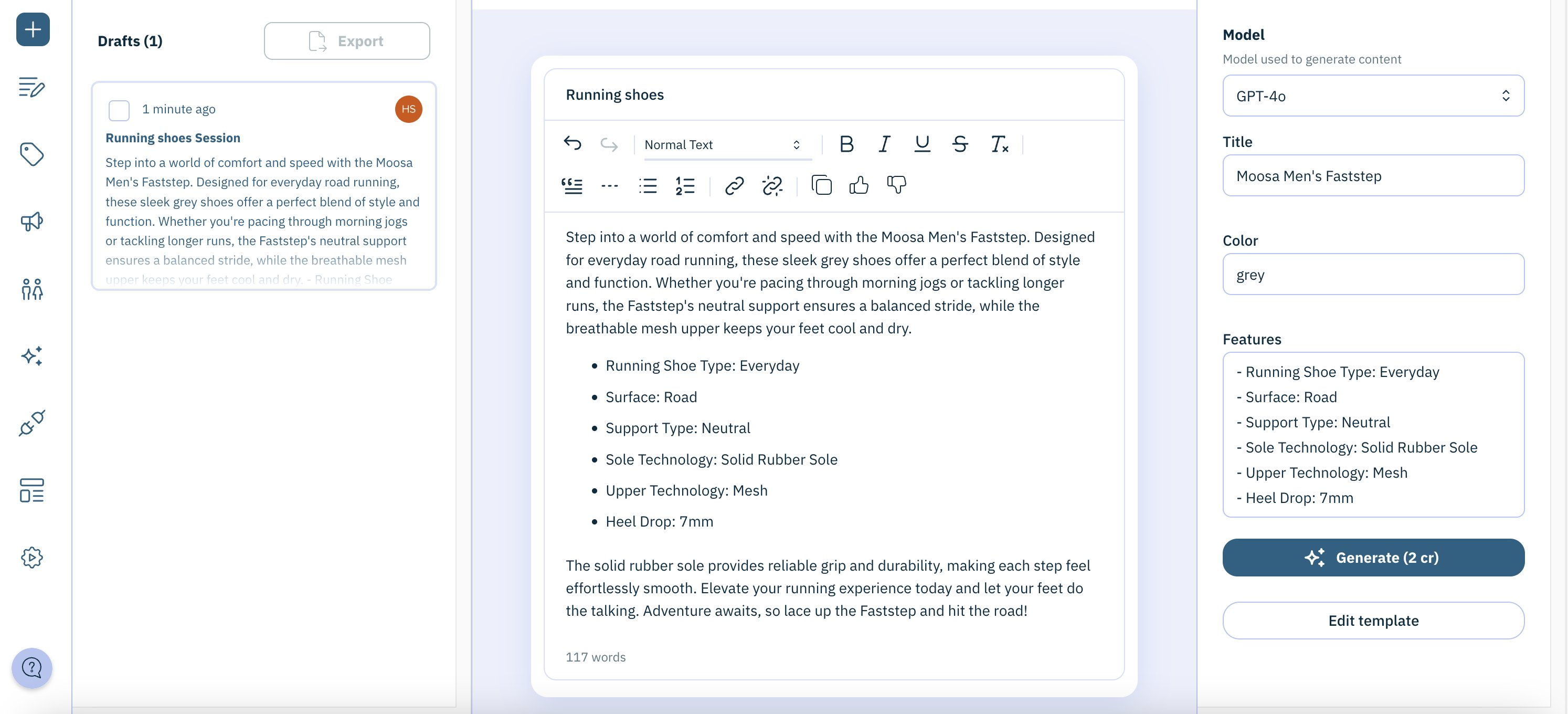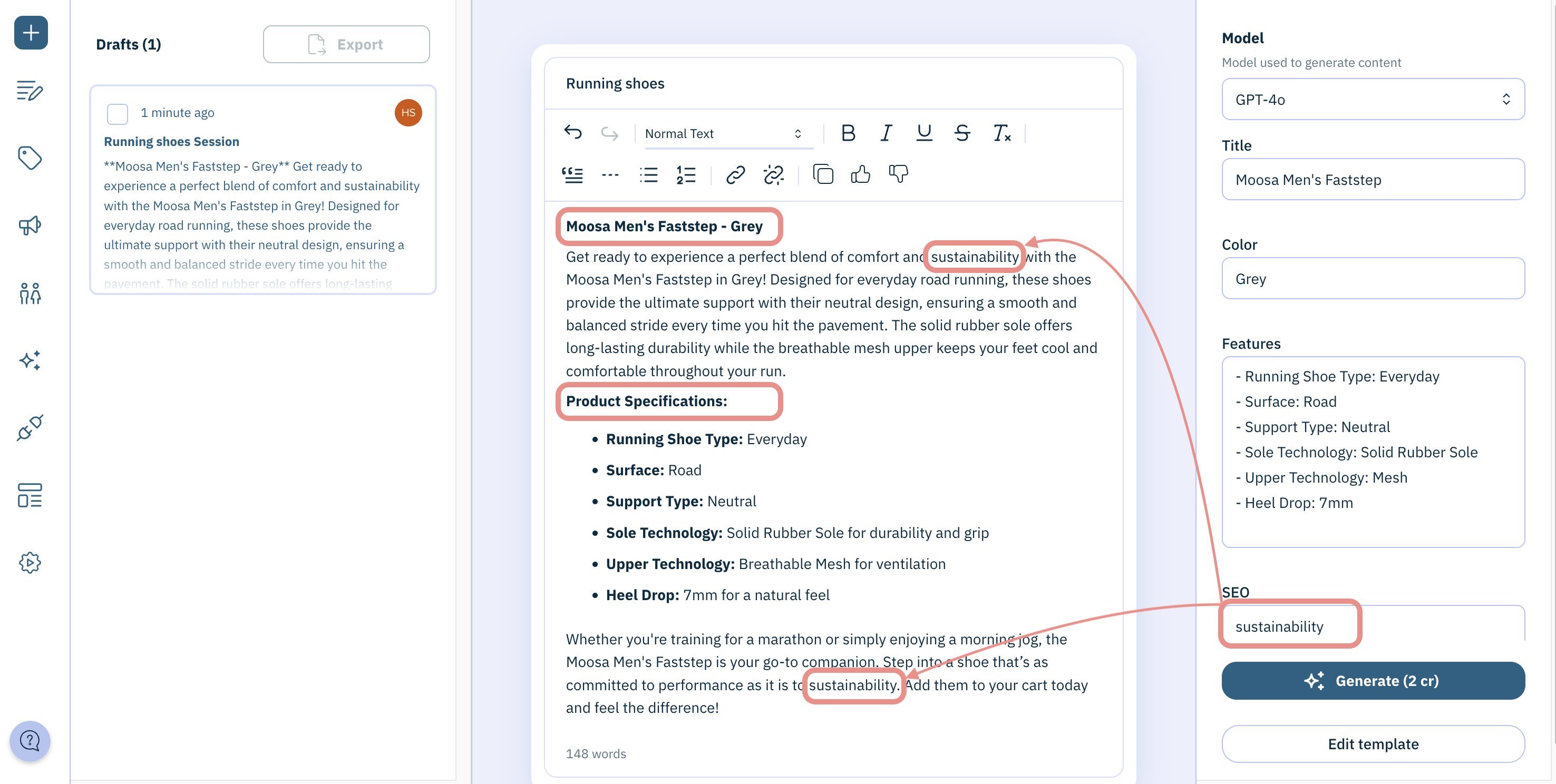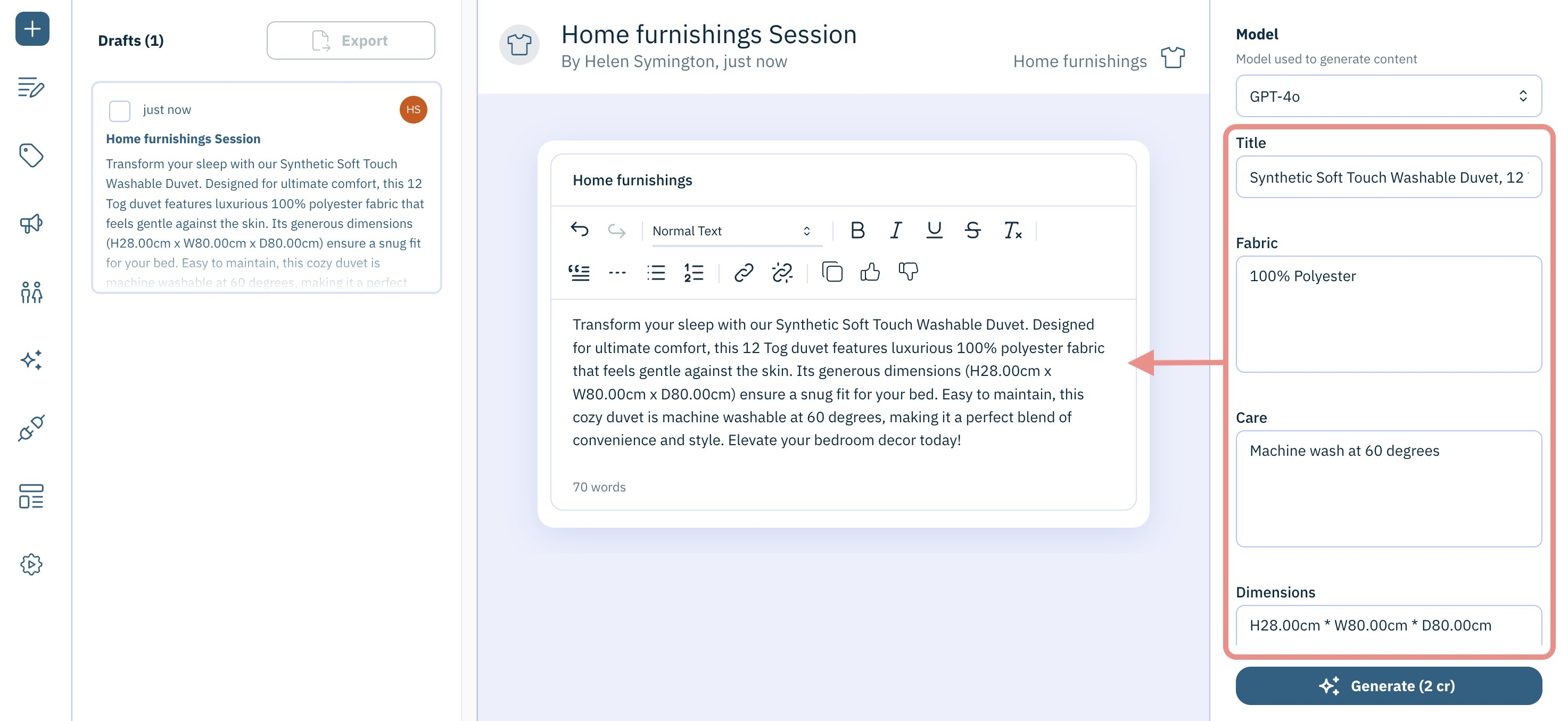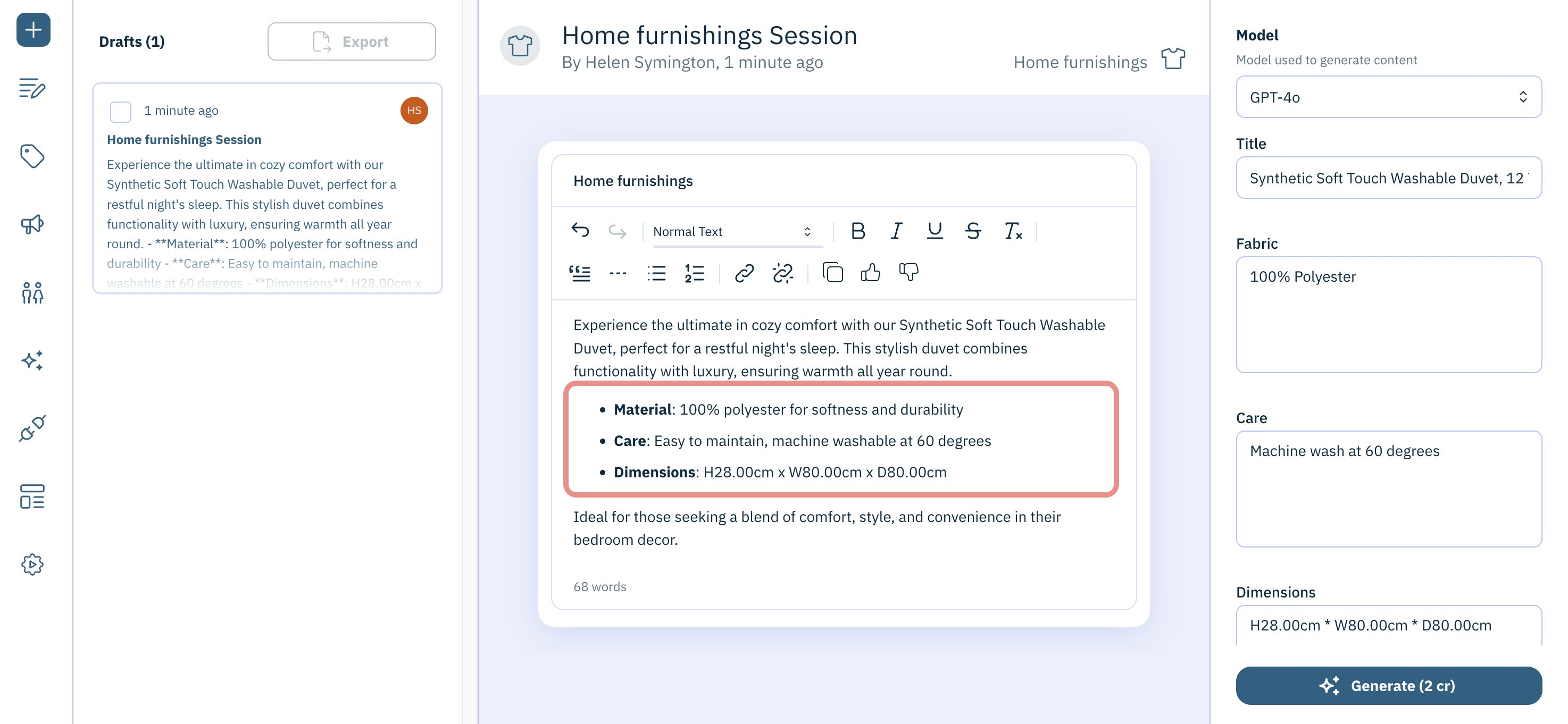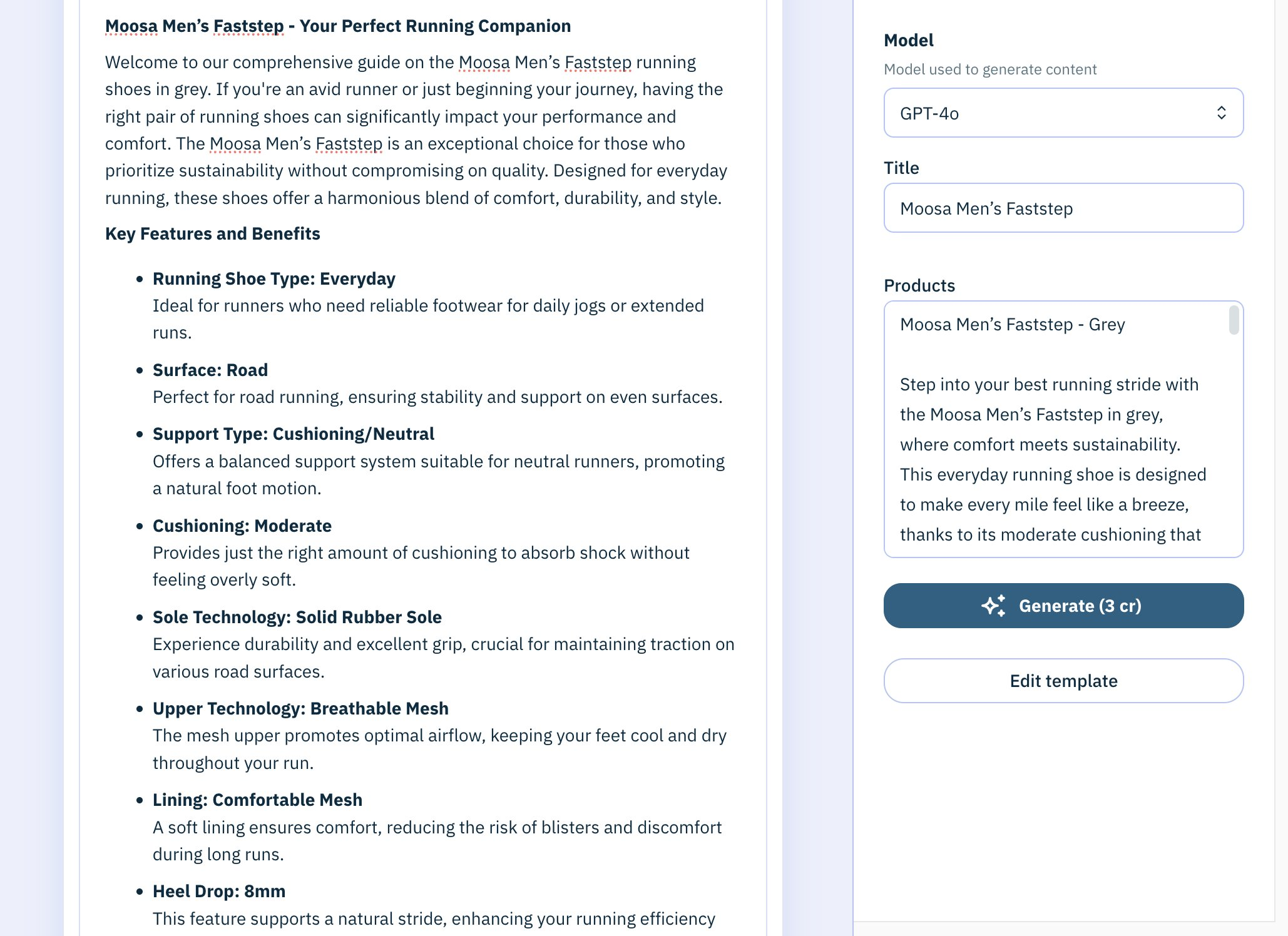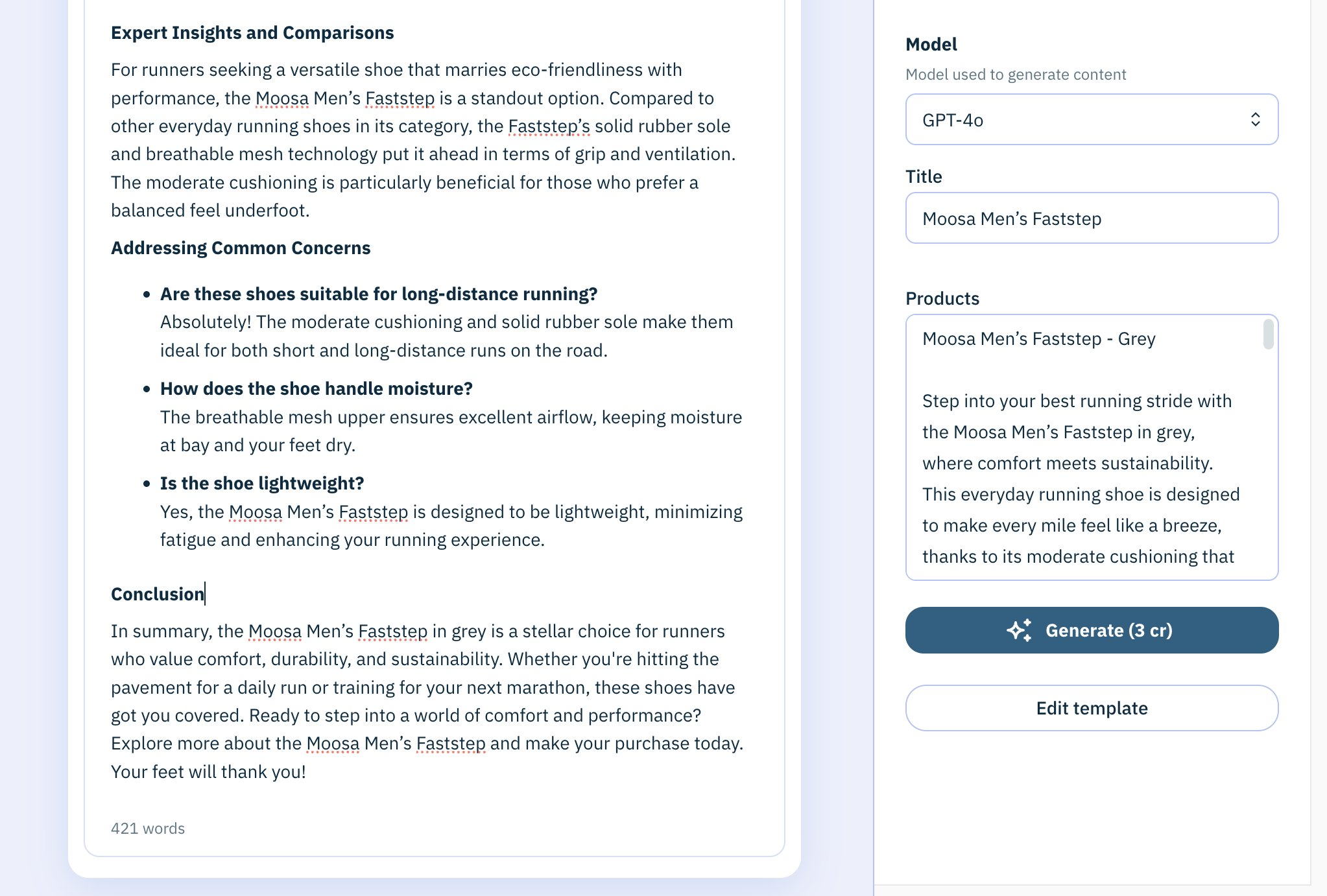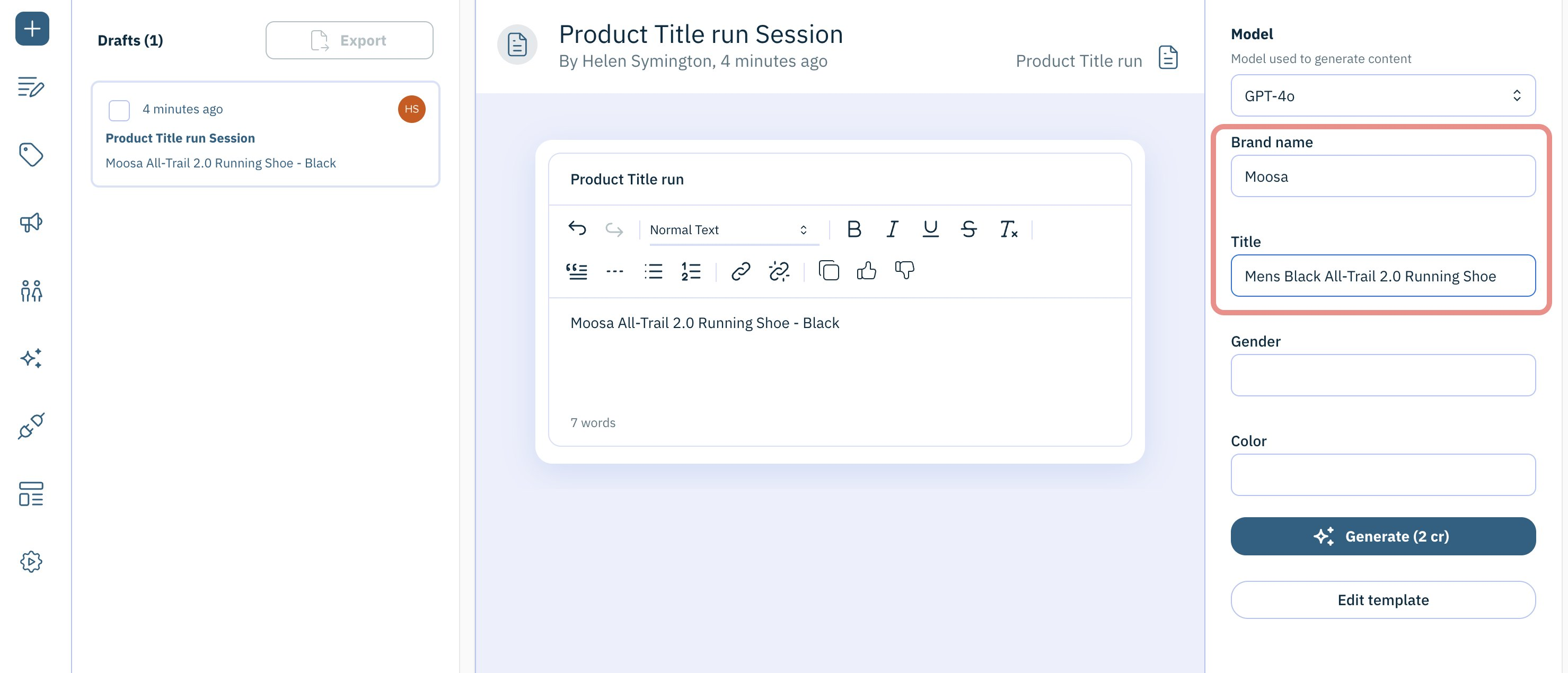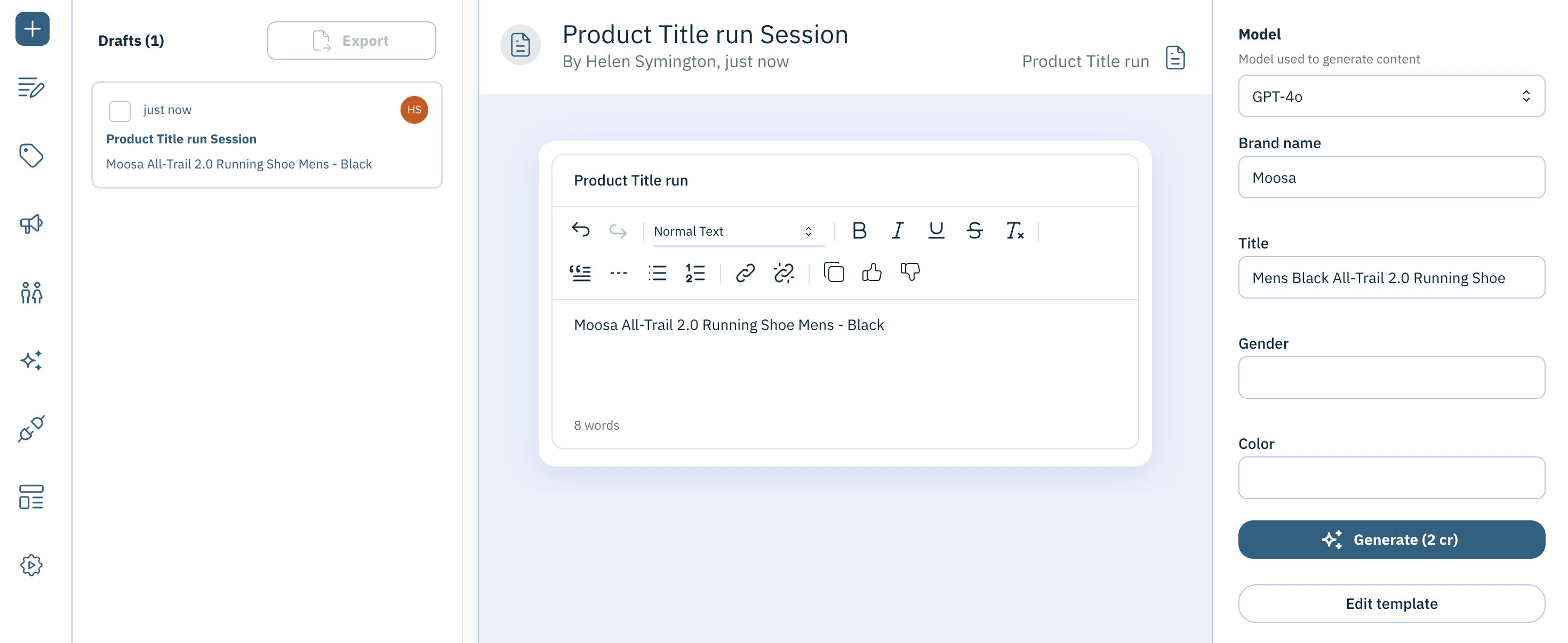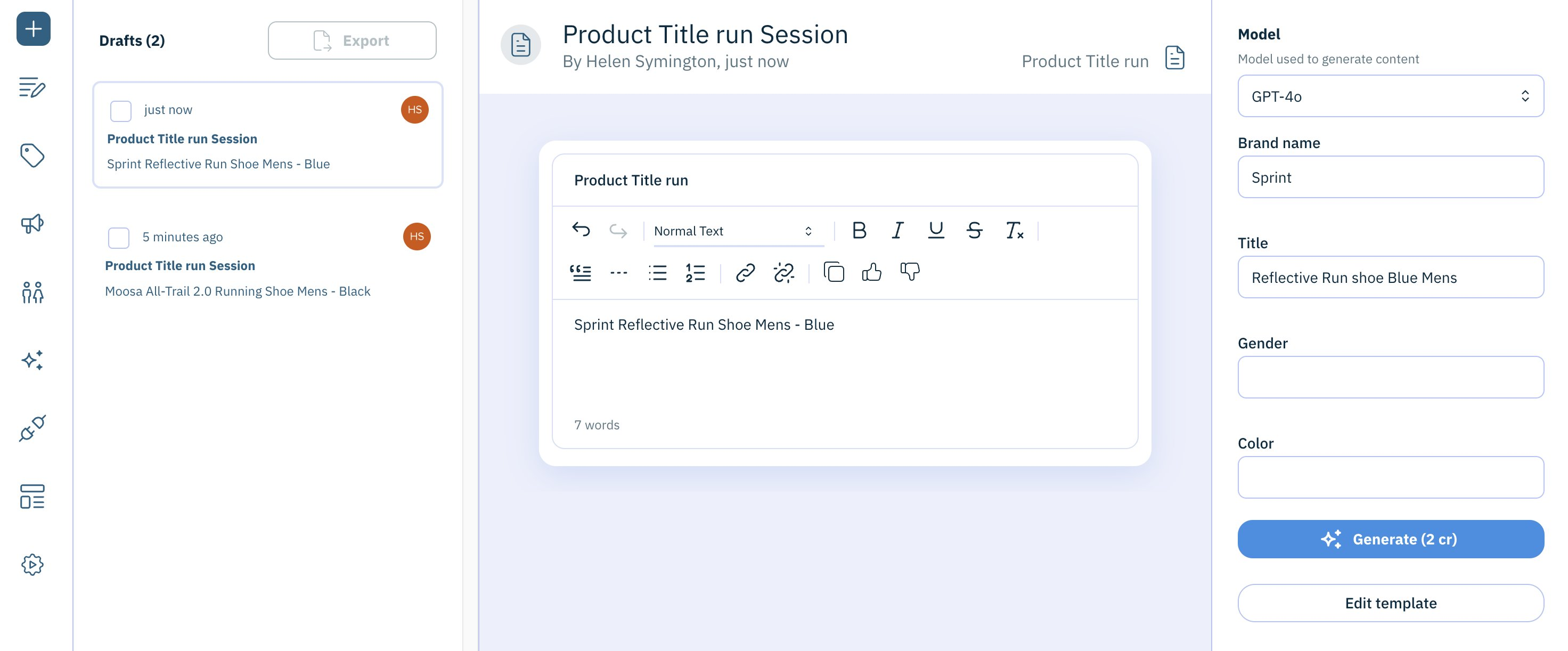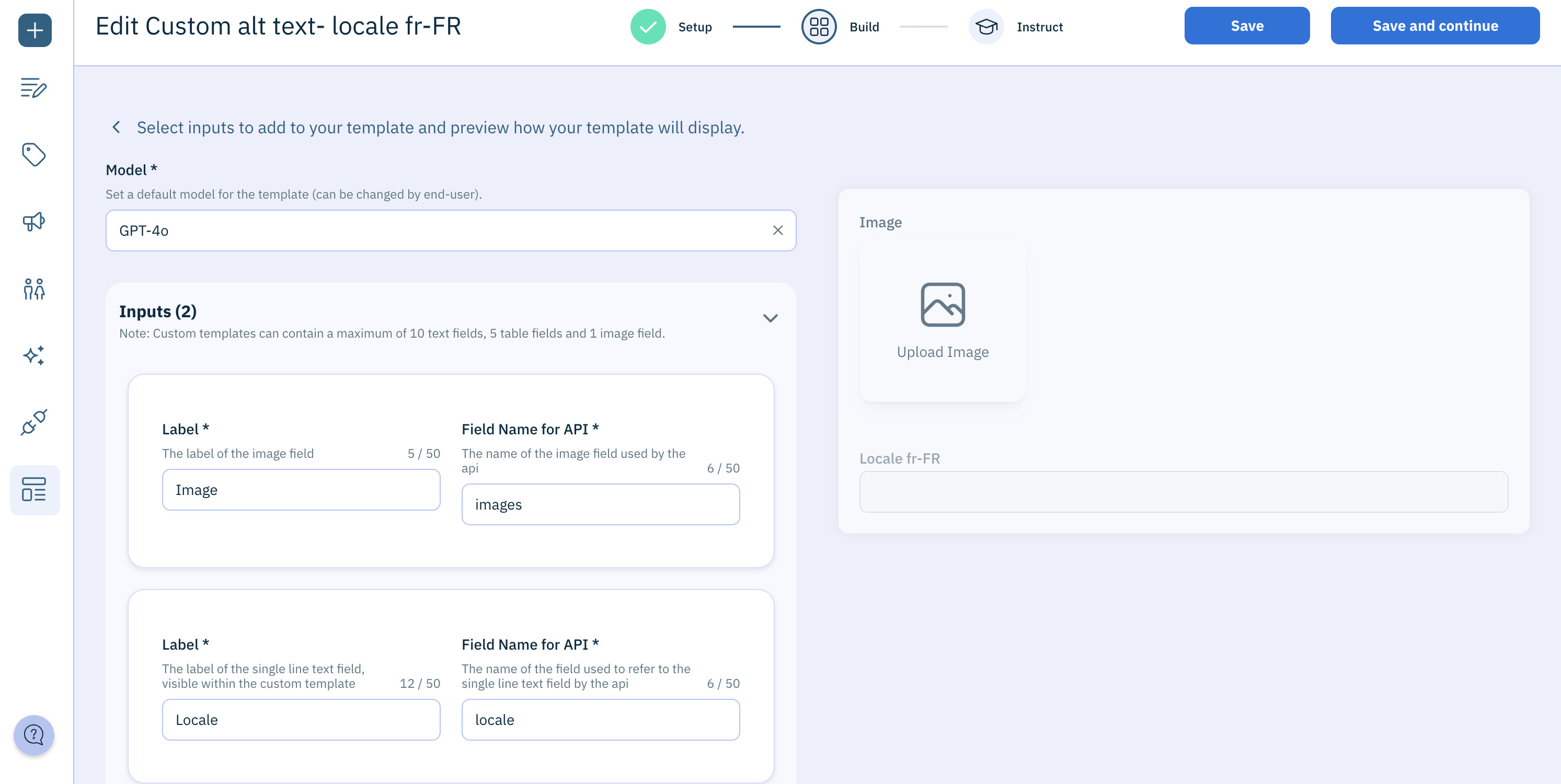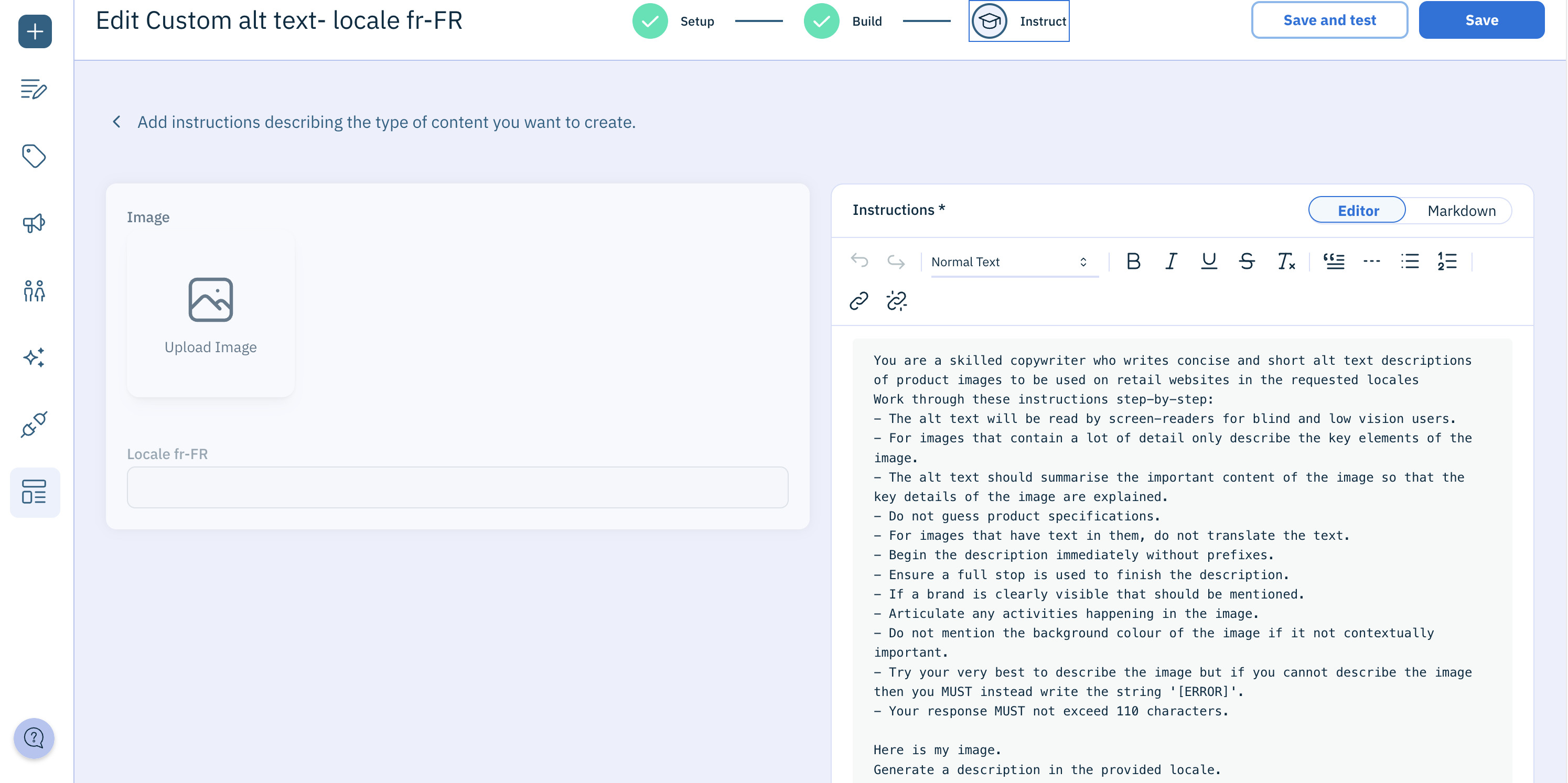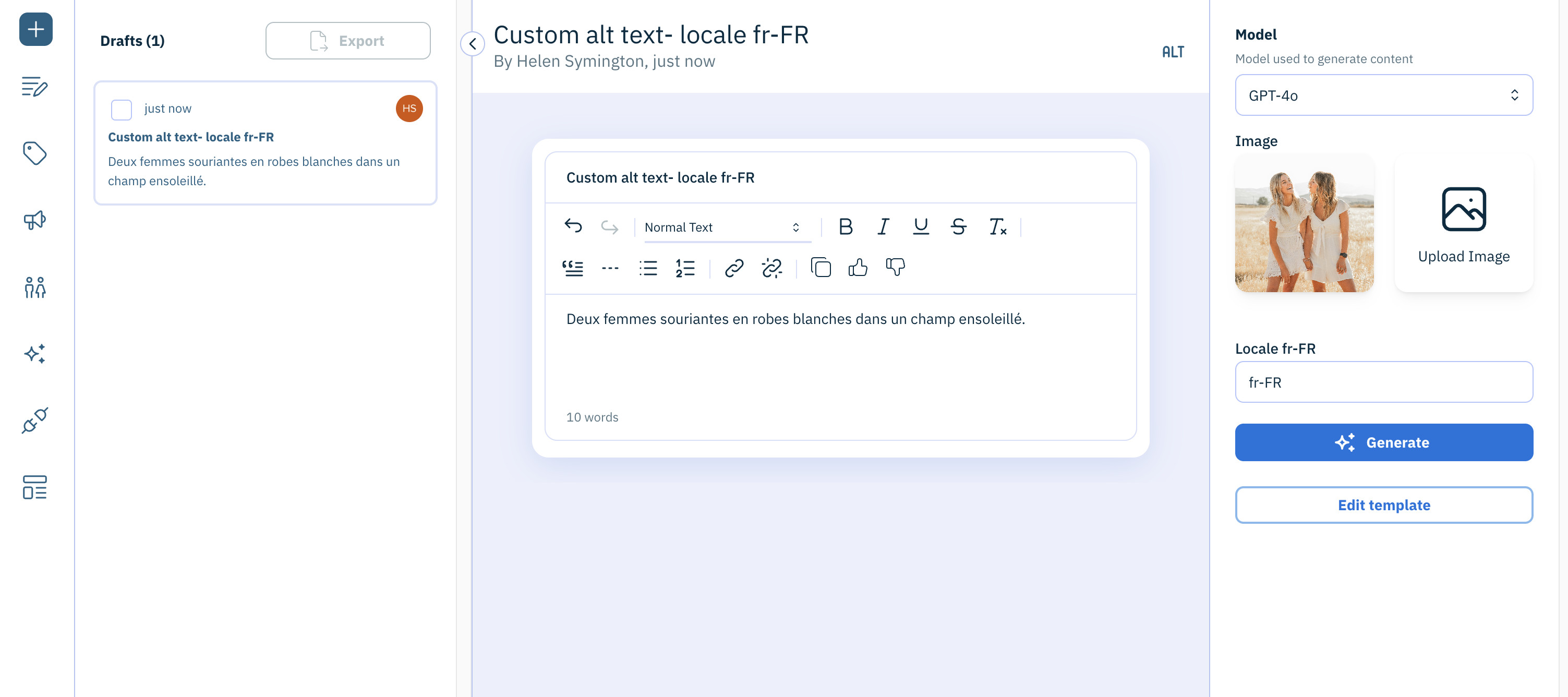Custom template example prompts
The effectiveness and success of your custom templates depend on how well they are set up, particularly the prompts you include.
Custom template promptsLink copied!
There are no hard and fast rules for writing prompts - which you can easily find out with a quick online search. So, if you're new to prompt writing, experimenting with different prompts is a good way to build your confidence and understand what works well for the content you're creating.
Here are a few examples to help you get started with writing prompts for custom templates. Our examples may not completely align with your requirements, so think of them more as inspiration as you start your prompt writing journey.
Examples for product descriptionsLink copied!
Custom templates put you in control of your product descriptions, letting you decide the amount and types of information you want to provide the LLM (inputs) and the structure and style you want for your generated content (outputs).
Here are some examples of custom template prompts that will be used for creating product descriptions.
Example 1: Running shoesLink copied!
For this example we want to generate persuasive product descriptions that encourage readers to purchase running shoes. We've decided to create a custom template to generate our product descriptions because the predefined template does not include all the fields we need to provide very specific product data to the LLM as part of generation.
We also need to write a prompt that will create product descriptions for each product, taking into account our brand guidelines and formatting requirements, while using the factual list of features we provide..
For this example, the running shoes product features are:
- Product name: Moosa Men's Faststep
- Color: Grey
- Running Shoe Type: Everyday
- Surface: Road
- Support Type: Neutral
- Sole Technology: Solid Rubber Sole
- Upper Technology: Mesh
- Heel Drop: 7mm
1. GuidelinesLink copied!
We'll start by considering any guidelines we have for the running shoes product descriptions.
For this running shoes example, the product description guidelines are:
- Keep descriptions to 3-4 sentences.
- The respective benefits of the unique product features should be highlighted.
- Use a casual tone that encourages the reader to improve themselves with each product.
- Include details that answer the most likely questions reader will have.
2. Example promptLink copied!
Once the guidelines are clear, think about how they can be written as instructions in a custom template prompt.
Remember, for this example we are writing a prompt for a custom template that will be used to generate product descriptions for running shoes.
Here's how we've chosen to write the prompt:
3. Test the custom template promptLink copied!
Using our example prompt and the list of product features above, this is what our custom "Running shoes" product description template creates:
The features listed above are formatted in a bulleted list. This is because the inputs were passed in as a bulleted list. If we want our outputs to always use bullet points to highlight the features, we would need to write that in the prompt so it applies regardless of the input format.
4. Review and updateLink copied!
We've reviewed the product description generated by our initial custom template prompt (above), and it's a good start.
Looking more closely, we want to improve the product description to include:
- A a headline, containing the product title
- A sub heading of "Product Specification"
- Specific SEO keywords, in this case 'sustainability'
To make these changes we'll use the "Edit template" button to update the prompt with the following instructions:
- Product name is shown as a title with the color appended to it
- List features below the heading "Product Specifications"
For the SEO improvement, we'll allow users to specify SEO keywords by adding a SEO field to the custom template.
Now when we test the prompt, it includes a title, the "Product Specifications" sub heading and specifically uses our "sustainability" keyword:
You can continue to review and experiment with prompts until you achieve the results you want.
Example 2: Home furnishingsLink copied!
For this example we want to generate straightforward product descriptions that give readers sufficient information to purchase home furnishing products.
For this example, our product is a duvet with these product features:
- Product name: Synthetic Soft Touch Washable Duvet, 12 Tog
- Fabric: 100% Polyester
- Care: Machine wash at 60 degrees
- Dimensions: H28.00cm _ W80.00cm _ D80.00cm
1. Guidelines for home furnishings promptLink copied!
We'll start by considering any guidelines we have for the home furnishings product descriptions.
For this home furnishings example, the prompt guidelines are:
- Open with an engaging statement that highlights the purpose and style of the products.
- Include materials, dimensions and design details.
- Include high-ranking keywords while maintaining a conversational tone.
- Stay within 50-75 words and avoid superfluous words.
2. Example promptLink copied!
We'll use the guidelines above to help write a clear prompt for products in a home furnishings store.
Here's our example prompt:
3. Test the custom template promptLink copied!
Based on our prompt above and the list of product features, this is what our custom "Home furnishings" product description template creates for the inputs displayed highlighted on the right:
The generated content shown above isn't formatted into a bulleted list. The feature values have simply been taken from the input fields with no additional formatting. If we want our outputs to always use bullet points to highlight the features, we need to write that in the prompt, regardless of the input format.
4. Review and updateLink copied!
To improve our home furnishings product description, we want the product features in a bulleted list, so we've updated one of the instructions to:
- Clearly outline the product’s material, dimensions and design features in a bulleted list.*
Now, the custom template generates this:
You can experiment with combinations of instructions and input fields until you achieve the results you want.
Examples for buying guidesLink copied!
Custom templates are a useful way to standardize your buying guides with custom data such as season/holiday, product line, or other pertinent information from your copy brief.
Example buying guide promptsLink copied!
With this buying guide example, we want to reassure readers that the running shoe they are reading about meets their needs.
For this example, we're going to use the Running shoes Product Description that we generated in a previous example as the input for our buyer guide.
1. GuidelinesLink copied!
Consider what you want to achieve with a buying guide and any guidelines that need to be included.
Guidelines for our running shoes buying guide example:
- Clearly explain the product importance in relation to its target audience, and key considerations in an engaging, friendly tone.
- Use clear headings, bullet points, and concise sections to make the guide easy to scan and understand.
- Break down essential product features, compare different options, and provide expert recommendations.
- Pre-empt answers to common FAQs, resolve hesitations, and offer practical buying tips.
- Naturally integrate relevant keywords, improve search visibility, and conclude with a compelling call to action.
2. Example promptLink copied!
Think about how the guidelines can be written as instructions for a custom template prompt.
Here's our example prompt :
Think about making your prompts general enough to apply to a range of products or categories. In our example, we haven't included "shoe-related details" in the prompt, so the template can be used for other products too. Our Running.com retailer could also use this prompt for their running clothing and accessories.
3. Test the custom template promptLink copied!
To test our prompt, we've used the product description (that we generated for the product earlier) in the Products input field. Using the input and our prompt (above), this is what our "Running shoes" buying guide template creates:
The detailed instructions in our example buying guide prompt have built on the information in our product description, delivering extra sections, such as insights, common concerns and a conclusion.
4. Review and updateLink copied!
This example buying guide prompt could be used as a starting point for other buying guides, adapting it for different requirements.
Examples for product titlesLink copied!
As an online retailer, it's good to maintain consistent titles for your product descriptions. However, if you have multiple suppliers, each sending you product descriptions in slightly different formats, you may want to use a custom template to standardize your product titles.
Using custom templates you can make sure your product description titles, follow the same rules for capitalization, abbreviations and order of details.
Example product title promptsLink copied!
For this example we want to generate standardized product titles for running shoes from multiple manufacturers. This will help us achieve consistency across our website, helping readers to quickly scan key product details.
1. GuidelinesLink copied!
First, we'll look at any guidelines for how the product titles should appear.
For this running shoes example, the product titles guidelines are:
- Title copy should be less than 10 words.
- Should start with product brand name.
- Key features should be mentioned.
- Color should only come at the end of the title separated by a hyphen.
In addition, we want all running shoe titles to be in the format:
[Brand name][Product name][Gender] - [Color]
2. Example promptLink copied!
Use the guidelines to help write instructions for a custom template prompt that standardizes product titles.
This is how we've chosen to write the prompt:
3. Test the custom template promptLink copied!
Based on our prompt above, this is what our custom "Running shoes" product title template creates from the product title Moosa Mens Black All-Trail 2.0 Running Shoe:
The inputs that were used are highlighted on the right.
4. Review and updateLink copied!
The product title is nearly formatted as we want. The color has been detected in the title, without us having to enter it separately. However, we've forgotten to include gender in the prompt. Even though it is in the original product title, it's been missed, so we need to make adjustments.
We'll update the prompt by adding a new instruction and amending the color instruction:
- Product gender is added at the end of the title separated by a space. For example: 'Mooza All-Trail 2.0 Running Shoe Mens'
- Product color is added after gender separated by a hyphen. For example: ‘Mooza all-trail 2.0 Mens – Black’
The updated prompt, generates our product title correctly:
Trying our prompt with a product title in a different format, also formats the title the way we want it:
Tips for product title promptsLink copied!
Our running shoes example demonstrates very simply the types of conditions and instructions you can include in your prompt titles.
Here are some general ideas of how you can build up your title prompts:
| Guidelines | Prompt |
|---|---|
| Multi-pack information is described at the start of the title. E.g: ‘Pack of 10 Kids Plastic Hangers’. | If a product is a multi-pack, this must be mentioned at the start of the title, in the format ‘Pack of [X]’. For example: ‘Pack of 10 Kids Plastic Hangers’. |
| Color should not be mentioned in the title. | The color of the product must not appear in the product title. |
| Title must use initial capitals | The title should use initial capitalization. |
| Always use the complete brand name, not an abbreviation. | Use complete brand names instead of abbreviated names. For example use the brand name Moosa must be used in place of Msa. |
Examples for automatic alt textLink copied!
Custom templates may be used to generate alt text for if you have highly specific requirements for how alt text must be written.. By using custom templates alongside the Amplience alt text service, you can influence the generated text with more brand specific criteria, if needed, at scale.
To generate alt text with custom templates, you'll need to use AI models that can read images. You can check model capabilities on the Workforce AI models page.
Example for automatic alt text serviceLink copied!
This example outlines how to set up a custom template for generating alt text with the Amplience alt text service.
The Automatic alt text service will need to be provisioned on your account, and will use Amplience credits. To request provisioning visit our Support portal.
1. Create a custom alt text templateLink copied!
You will need to create a custom alt template that can be used by the automatic alt text service. Learn how to create custom templates.
Your custom alt text template should include:
- One image field with the API field name images
- One text field with the API field name locale. Note, the locale value used during generation, will be set by the automatic alt text webhook subscription when it's set up, allowing the template to accept any locale code.
Here's an example of how the template fields should be set up for use with the automatic alt text service:
Your custom template also needs to include your prompt, which should be based on your guidelines. We've used an example prompt:
2. Guidelines for the promptLink copied!
Consider the WCAG accessibility criteria for images as well as any additional brand or SEO requirements you have for image alt text, such as:
- Should be less than 110 characters.
- Ensure a full stop is used to finish the description.
- If a brand is clearly visible that should be mentioned.
Currently, Brand Rules cannot be referenced in a custom template. Any specific instructions you want LLMs to adhere to must be included in your custom template prompt.
2. Example promptLink copied!
Use your guidelines to write clear instructions in your custom template.
Here's our example prompt :
3. Test the custom template promptLink copied!
Based on our prompt above, this is what our custom "image alt text" template creates from the image we supplied:
The inputs that were used are shown on the right.
